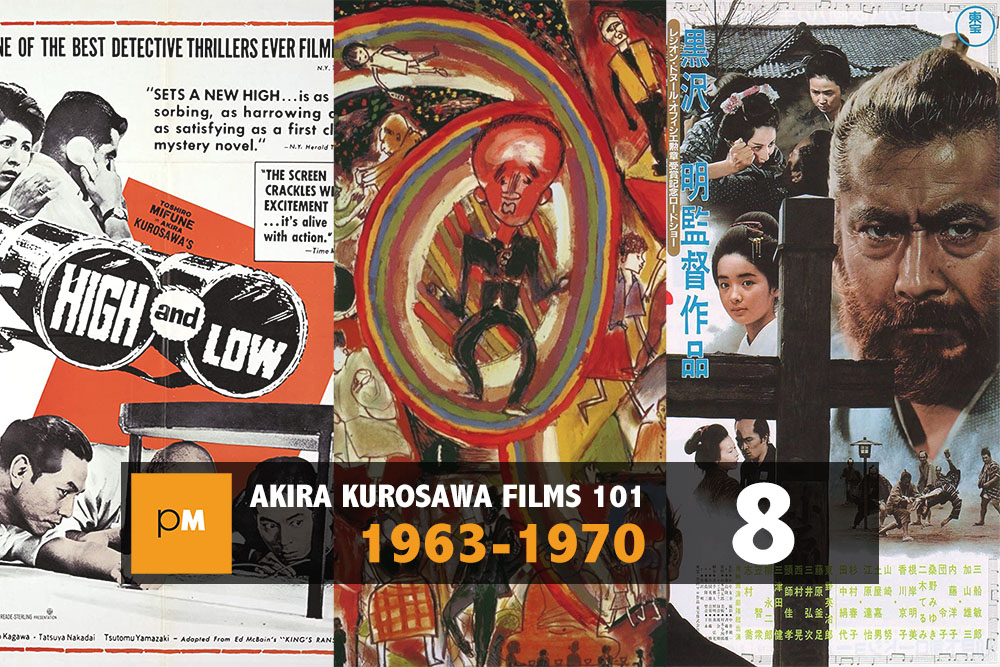High and Low (1963)
What would you give to save the life of your child? That should be an easy one: you give whatever it takes, down to your last nickel and then some. A more interesting question: what would you give to save the life of someone else’s child? Wealthy industrialist Kingo Gondo (Toshirô Mifune) finds himself confronted with both questions in rapid succession in Akira Kurosawa’s High and Low. First, he receives a ransom demand for his son then learns that in fact, it is the son of his chauffeur who has been kidnapped. No matter, says the kidnapper Takeuchi (Tsutomo Yamazaki): Gondo must pay 30 million yen (an amount which will bankrupt him) or the boy dies.
Gondo’s dilemma is the focus of the first third of the film as various other characters (his wife, the boy’s father, his secretary, members of the police force) provide information and offer their points of view. Their discussion, while fascinating in its own right, also sets up another, larger question which is Kurosawa’s real interest: in a rapidly modernizing society such as postwar Japan what is the responsibility of one person to another? The Japanese title Tengoku to jigoku — more accurately translated Heaven and Hell — is a statement of geography as well as social class, set in summertime Yokohama: Gondo and his family live in a luxurious air-conditioned house atop a hill overlooking a sweltering slum where Takeuchi and countless others lead a desperate existence. To put Kurosawa’s consequences in other terms, what is the consequence of arranging society so that a few live in heaven while many more live in hell?

The first 55 minutes of High and Low take place in Gondo’s westernized living room. Kurosawa presents this section of the film in long takes which feel almost like a stage play (Kurosawa used two cameras filming continuously and decided later how to cut them together). The mood shifts abruptly as Gondo moves to carry out the kidnapper’s demands to bring the ransom money, packed in two thin briefcases, onto the Kodama express train. In a remarkable four-minute action sequence we see the police racing to set up surveillance cameras, get a glimpse of the kidnapped boy as the train whizzes through the countryside, and watch Gondo, as instructed, drop the briefcases through the moving train’s window.
After a brief introduction to the kidnapper in his cramped flat, most of the remainder of the film is a detailed police procedural (the screenplay is adapted from the novel King’s Ransom by Ed McBain, a pen name for Evan Hunter) depicting the labor-intensive process of gathering information and putting the pieces of the puzzle together first to identify and then arrest Takeuchi. Static briefing sessions are intercut with flashbacks illustrating how information was obtained and we also see more of the hell of Yokohama: backstreets and dive bars full of drug addicts and prostitutes whose lives are valued at very little. Ultimately Gondo and Takeuchi have a confrontation that honors the complexity of the issues and refrains from offering a simplistic answer to Kurosawa’s question. — Sarah Boslaugh
- Director Spotlight: Akira Kurosawa
- Akira Kurosawa Films 101: 1960 - 1962
- Akira Kurosawa Films 101: 1955 - 1958
- Akira Kurosawa Films 101: 'Seven Samurai' (1954)
- Akira Kurosawa Films 101: 1950 – 1952
- Akira Kurosawa Films 101: 1949 – 1950
- Akira Kurosawa Films 101: 1946 – 1948
- Akira Kurosawa Films 101: 1943 - 1945


![Call for Papers: All Things Reconsidered [MUSIC] May-August 2024](https://www.popmatters.com/wp-content/uploads/2024/04/all-things-reconsidered-call-music-may-2024-720x380.jpg)



